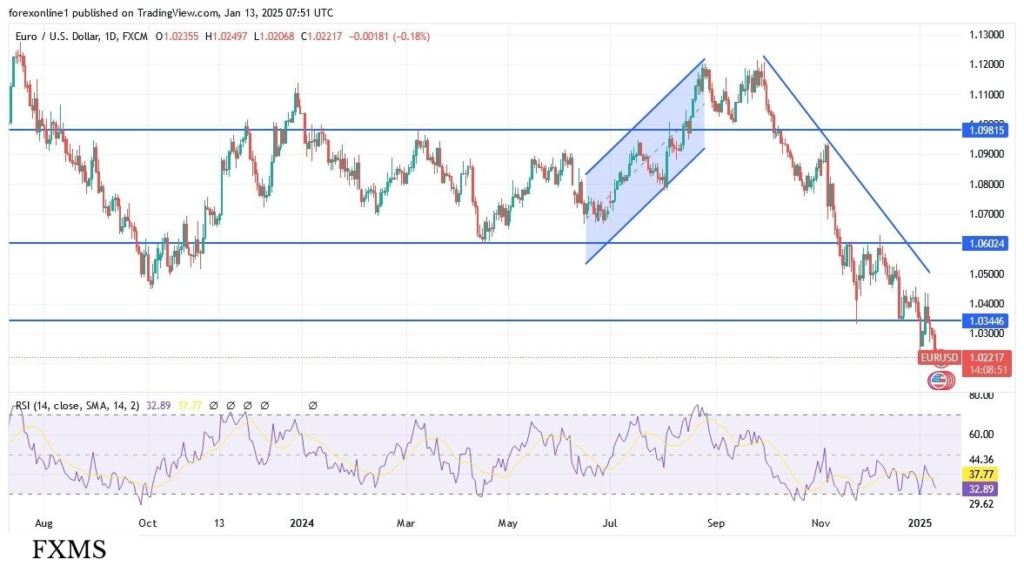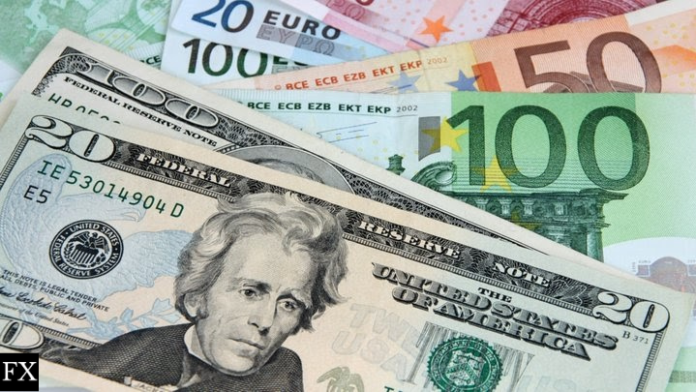The EUR/USD pair experienced significant losses last week, plummeting to a two-year low of 1.0213 before stabilizing around 1.0240. This decline was fueled by the Federal Reserve’s hawkish meeting minutes and stronger-than-expected US jobs data. The pair now faces continued downward pressure as traders await key US economic data, most notably the upcoming inflation figures.

Trump’s Trade Policies and Potential Impact on Rates
The IMF is concerned that former President Trump’s proposed tariffs are creating global economic uncertainty. IMF officials, including Managing Director Kristalina Georgieva, note that these policies are contributing to higher long-term borrowing costs, a counterintuitive trend alongside falling short-term rates. The IMF also warns that tariffs could weaken global growth by 0.5% and cause supply chain disruptions. This uncertainty is fueling higher bond yields and a stronger dollar as markets assess the implications of Trump’s trade policies.
Focus on US Inflation Data and Fed Policy
Forex markets are now squarely focused on the upcoming US inflation report. This data is anticipated to significantly influence the Federal Reserve’s policy outlook for 2025, especially given the current landscape with a new US administration. Last week’s strong US jobs report, which showed an increase of 256,000 jobs in December and a drop in the unemployment rate to 4.1%, also plays a crucial role. This robust employment growth, despite recent interest rate hikes, diminishes the likelihood of further Fed rate cuts in the near future. The Fed previously cut rates three times in 2024 citing concerns about slowing employment and growth, but the latest data could alter their course.
EUR/USD Technical Outlook and Trading Recommendations
Technically, the EUR/USD pair remains in a clear downtrend, edging closer to parity. Stronger-than-expected US inflation data could further fuel this downward momentum, potentially compelling the Fed to pause or reverse its rate-cutting cycle. The combination of this hawkish Fed policy and the potential for protectionist trade policies from the Trump administration could push the pair towards parity. Key support levels to watch are 1.0180, 1.0090, and parity at 1.0000. These levels may trigger oversold conditions on technical indicators such as the RSI and MACD.
Trading Recommendation:
While acknowledging the volatile environment, selling the EUR/USD remains the preferred strategy. However, risk management is paramount. Traders should use stop-loss and take-profit orders to mitigate risks from unexpected price swings. Continue to monitor our website for updated EUR/USD and other Forex trading signals.
Ready to trade the EUR/USD Forex analysis? Here’s a list of some of the top forex brokers in Europe to check out.

